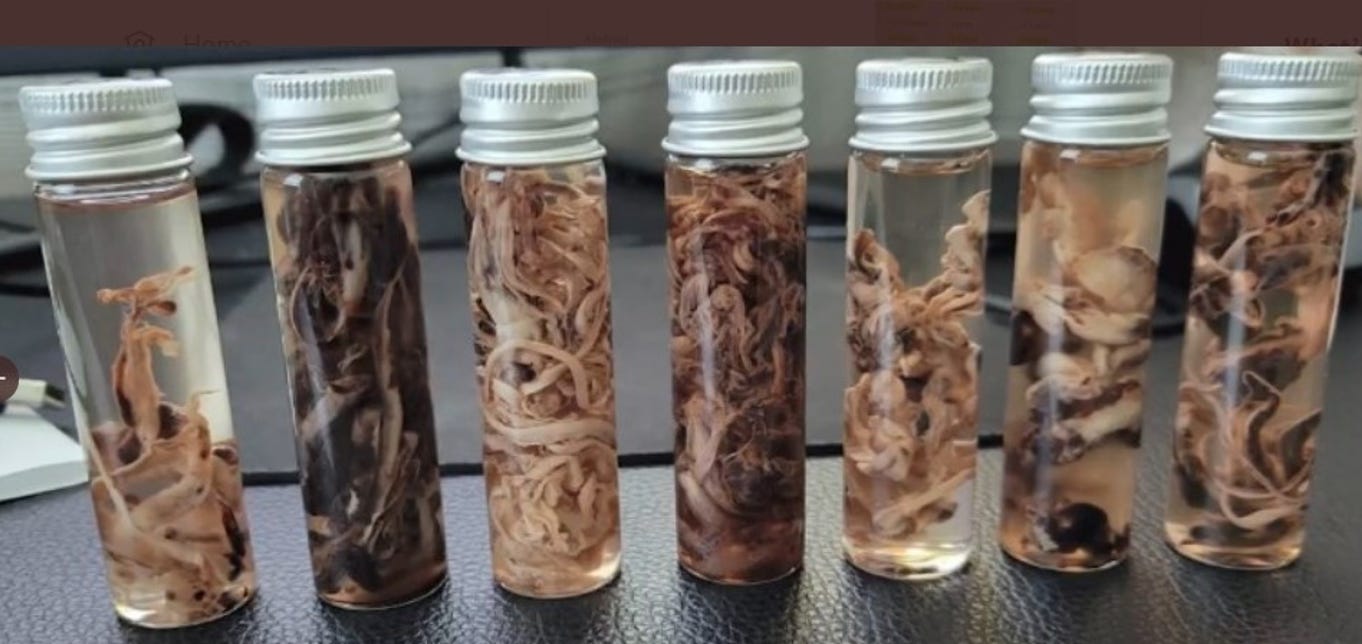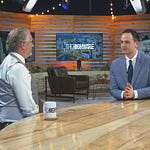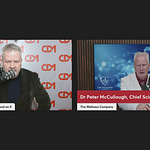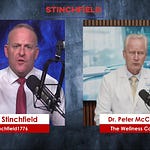In this eye-opening interview, I sit down with embalmer Richard Hirschman and industrial chemist Greg Harrison to investigate the emergence of large, white fibrous clots in deceased individuals who received COVID-19 mRNA injections.
Hirschman, a seasoned embalmer with over 20 years of experience, first began noticing these unusual white, rubbery clots in early 2021. Found in both veins and arteries—a rarity in embalming practice—their frequency and composition were unlike anything he had encountered in two decades of work.
To better understand what they were made of, he partnered with Greg Harrison, an industrial organic chemist with deep expertise in polymer analysis. Harrison subjected the clots to rigorous biochemical testing using techniques like ICP-MS, HPLC, Raman spectroscopy, and RT-QuIC.
What they uncovered is nothing short of shocking: these are not ordinary post-mortem clots. The structures are composed of misfolded fibrin proteins with amyloid characteristics—including signs of infectious amyloid behavior, capable of triggering misfolding in other proteins. These findings raise grave concerns about a novel, systemic disease process that may be silently affecting millions:
What’s Inside These Clots?
Not Normal Clots:
These are not “chicken fat clots” or ordinary post-mortem artifacts. Richard Hirschman, who has embalmed thousands of bodies, began finding these anomalies only after the COVID-19 mRNA injection rollout in 2021 — not during the height of the COVID pandemic in 2020.
The clots are rubbery, fibrous, and white, often stretching several inches and appearing in both arteries and veins — which is highly unusual.
Traditional blood clots are soft, jelly-like, and typically limited to veins. These new clots are durable, rope-like, and difficult to break down — even with conventional embalming procedures.
Hirschman reports seeing these clots in 30–50% of all bodies he embalms, a rate that fluctuates but remains persistently high — and many other embalmers are now reporting the same.
Clot Composition (ICP-MS, HPLC, and Amino Acid Profiling):
Greg Harrison’s team subjected the clots to a battery of analytical techniques, revealing profoundly abnormal chemistry:
Extremely high levels of phosphorus — up to 4,900 ppm, compared to a normal blood range of 100–1,500 ppm.
Deficiency of essential blood elements, including iron, zinc, and magnesium — all typically abundant in red blood.
Dominant presence of fibrinogen beta chain — accounting for over 35% of protein content, while the fibrinogen alpha and gamma chains were severely underrepresented or nearly absent.
No complete fibrils detected — only monomers, indicating incomplete or dysfunctional polymerization of clotting proteins.
High concentrations of proline, an amino acid known to kink and misfold proteins — consistent with the presence of amyloidogenic material and potentially linked to modified codons in mRNA vaccines.
Amyloid and Infectious Properties
Amyloid Confirmation:
The clots were put through multiple gold-standard amyloid detection techniques:
Raman spectroscopy revealed spectral signatures consistent with beta-sheet-rich amyloid fibrils:
Thioflavin T fluorescence microscopy exposed intense green fluorescence across entire clot surfaces — a hallmark of amyloid presence.
These results were confirmed even more strongly when samples were preserved in argon gas and alcohol — preserving the fragile fluorescence signature often lost during standard embalming.
Infectious Amyloid Behavior:
RT-QuIC (real-time quaking induced conversion) showed that the clots not only contain amyloid — but may be infectious amyloids, meaning they can propagate misfolding in surrounding proteins:
These clots may behave like prions — they don’t just form abnormally, they may actively induce misfolding in healthy proteins, which can then misfold others in a chain reaction.
As these misfolded proteins accumulate, they form large, sticky fibrils that resist enzymatic breakdown, evade immune clearance, and may circulate systemically through the blood.
What Might Be Causing This?
Synthetic Spike Protein:
Once expressed, the spike protein appears to bind to fibrinogen and promote abnormal clotting pathways — confirmed in published studies.
Spiked fibrin appears twisted, nodular, and structurally different from normal clots under electron microscopy:
Lipid Nanoparticles (LNPs):
The mRNA delivery vehicles used in the shots contain DSPC phospholipids, which expose their phosphorus heads during mRNA release.
These hyperphosphorylated environments may act as nucleation points for abnormal clot formation, especially in blood rich in fibrinogen.
Modified Codons and Proline Substitutions:
The synthetic mRNA in the shots contains proline-rich sequences that stabilize the spike — but proline is known to induce kinking and misfolding in protein chains.
This may explain the unusually high proline content found in these clots — and their resistance to normal fibrinolysis.
Ramifications for Public Health
These findings cannot be dismissed as post-mortem anomalies. Similar clots have been removed from living patients during surgery and catheterization. Multiple independent embalmers and pathologists across the world are now reporting the same findings.
According to the 2024 Worldwide Embalmer Blood Clot Survey conducted by Major Tom Haviland, 83% of embalmers have observed large whitish "fibrous" structures/clots in embalmed corpses. I will be interviewing him on these findings in the near future.
Standard lab panels cannot detect these amyloid clots. Only specialized imaging using Thioflavin T fluorescence or similar markers can reveal them — meaning millions may be walking around completely unaware of what’s circulating in their blood.
What Needs to Happen Now?
Independent replication of these findings by mainstream labs using Raman, RT-QuIC, and NMR techniques.
Population-level screening for amyloidogenic burden — protocols are available via Dr. Kevin McCairn’s Synaptek Labs, with low-cost dried blood spot sampling now possible.
Immediate halt to COVID-19 mRNA injection programs.
Epidemiologist and Foundation Administrator, McCullough Foundation
www.mcculloughfnd.org
Please consider following both the McCullough Foundation and my personal account on X (formerly Twitter) for further content.

















